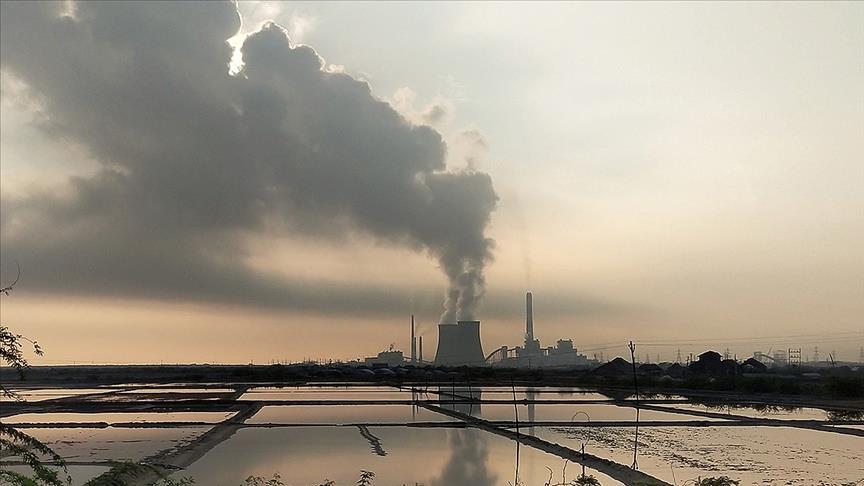Methane emissions from the global energy sector are about 70% higher than the official figures, according to International Energy Agency's (IEA) Global Methane Tracker on Wednesday
The IEA's expanded Global Methane Tracker data estimates that the energy sector emitted 135 million tonnes of methane emissions in 2021, marking a 5% year-on-year increase.
Methane is responsible for around 30% of the rise in global temperatures since the Industrial Revolution.
To counter this trend, the US, the European Union, and partners formally launched the Global Methane Pledge in November last year, an initiative to reduce global methane emissions to keep the goal of limiting warming to 1.5 degrees Celsius within reach.
According to Fatih Birol, the IEA executive director, the Global Methane Pledge must become a landmark moment in global efforts to drive down emissions.
"Cutting global methane emissions from human activities by 30% by the end of this decade would have the same effect on global warming by 2050 as shifting the entire transport sector to net zero CO2 emissions," Birol said.
The IEA found that quick and sustained emission reductions are key to limiting near-term warming and improving air quality.
"Methane dissipates faster than carbon dioxide but is a much more powerful greenhouse gas during its short lifespan, meaning that cutting methane emissions would have a rapid effect on limiting global warming," the Agency added.
The global energy sector is responsible for around 40% of total methane emissions attributable to human activity, second only to agriculture.
The data covering per country and sector methane emissions shows that the rise in methane emissions last year was due to higher fossil fuel demand and production as economies recovered from the shock of the pandemic. However, this rise did not return to the record high levels in 2019, representing more than two-and-a-half times pre-industrial levels.
The data shows of the 135 million tonnes of energy-related emissions, an estimated 42 million tonnes are from coal operations, 41 million tonnes from oil, 39 million tonnes from extracting, processing and transporting natural gas, 9 million tonnes from the incomplete combustion of bioenergy and 4 million tonnes of leaks from end-use equipment.
The IEA Tracker showed that significant emissions were confirmed in Texas and parts of Central Asia, with Turkmenistan alone responsible for one-third of the large emissions events seen by satellites last year.
Relatively few major leaks were detected for the major onshore oil and gas producers in the Middle East, according to the tracker.
With the inclusion of country-by-country estimates for coal activities alongside those for oil and gas operations in the tracker, China is the largest source of global energy-related methane emissions which stood at 28 million tonnes in 2021.
Russia followed with 18 million tonnes and the US with 17 million tonnes of methane emissions from the energy sector.
The best-performing countries and companies are over 100 times better than the worst, the IEA said.
Global methane emissions from oil and gas operations would fall by more than 90% if all producing countries matched Norway's emissions intensity, the lowest worldwide.
- More transparency on figures needed
According to the Tracker, if all methane leaks from fossil fuel operations in 2021 had been captured and sold, then natural gas markets would have been supplied with an additional 180 billion cubic meters of natural gas, which is equivalent to all the gas used in Europe’s power sector and more than enough to ease today's market tightness.
"At today’s elevated natural gas prices, nearly all of the methane emissions from oil and gas operations worldwide could be avoided at no net cost," Birol said.
"The IEA has been a longstanding champion of stronger action to cut methane emissions. A vital part of those efforts is transparency on the size and location of the emissions, which is why the massive underreporting revealed by our Global Methane Tracker is so alarming," he noted.
Satellites have increased the world’s knowledge of emission sources and the Global Methane Tracker incorporates the latest readings from satellites and other science-based measurement campaigns, the IEA said.
"While measured data continues to improve, the coverage provided by satellites is still far from complete: existing satellites do not provide measurements over equatorial regions, offshore operations, or northern areas such as the main Russian oil and gas producing areas," the IEA said, underlining the urgent need for enhanced monitoring efforts and stronger policy action to drive down emissions of the potent greenhouse gas.
However, uncertainty over emissions levels is no reason to delay action on methane, the IEA said.
More than 110 countries, led by the European Union and the US, launched the Global Methane Pledge in November 2021 at the United Nations COP26 summit in Glasgow. The participants of the pledge agreed to reduce methane emissions from human activities by 30% by 2030.
However, more major emitters like China, Russia, Iran and India need to join the pledge, the IEA cautioned.
By Nuran Erkul Kaya
Anadolu Agency


